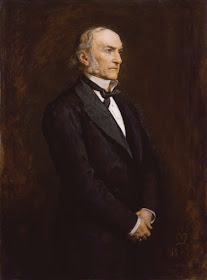Olina Chang asks: "I have a question [about the painting below]. When presenting these curvy overlapping shapes, [did you paint] "the idea" of what look like, like how the curvy, tangled way you "feel," or what [or did you try to paint] exactly you saw on site? (Maybe you saw 100 curvy tubes, but you draw 30 ones since they are so many ... ) Not sure how to express my question more precisely."
My answer: I think I understand what you're asking. With a very complicated subject like this glass sculpture, there is not a one-to-one correspondence between each and every one of the glass tendrils in the actual scene and the squiggly lines in my painting. It's just not humanly possible.
It's the same with any extremely complex subjects in nature, such as leaves on a tree. There's no way to draw or paint every single detail literally on location,
though some have tried. So you have to recreate the character of the forms within the language that's possible in paint.
Asher B. Durand explored this idea in his 1855 essays called "
Letters on Landscape Painting." He drew a distinction between imitation and representation. He conceded that a perfect copy of natural forms like flowing water or intricate foliage was impossible, but that the attempt to achieve it helped the artist develop methods that could be brought into service in recreating those forms back in the studio. So you don't want to fall back on standardized habits of painting leaves or other detailed forms, but instead to your best to capture the character of the subject as well as you can with your brushes and paint.









































